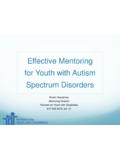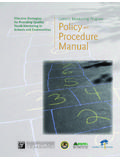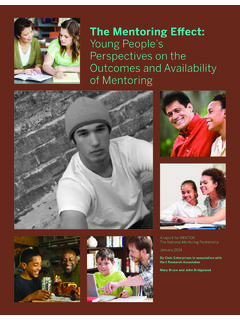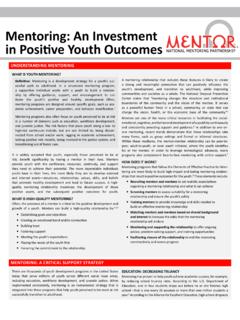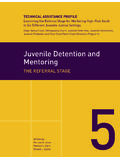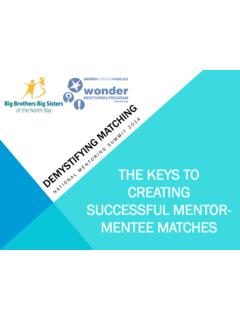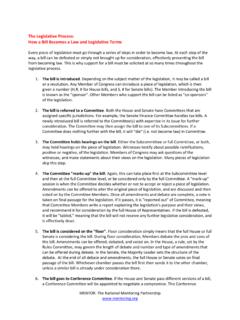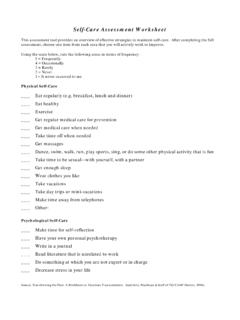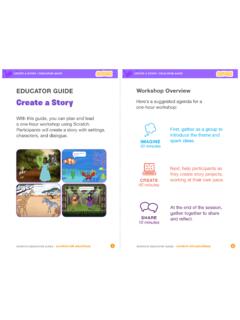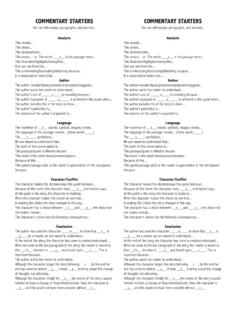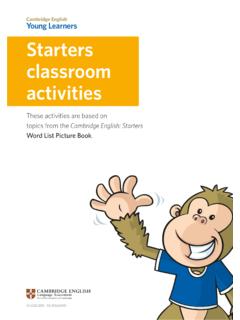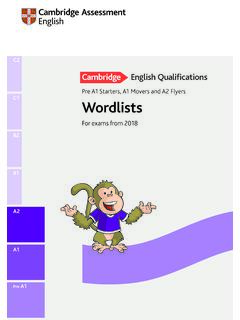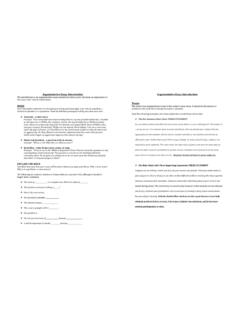Transcription of iversity Discussion Starters - MENTOR
1 Diversity Discussion StartersA Collection of Ice Breakers Designedto Start Conversation about DiversityCollege of Agricultural SciencesAgricultural Research and Cooperative Extension3 Introduction 5 Life Skills8 Discussion starter 1 Diversity 9 Discussion starter 2 The Man and the Eagle 10 Discussion starter 3 Color Blind 11 Discussion starter 4 Crayons 12 Discussion starter 5 The Crayon Box That Talked 14 Discussion starter 6 If All the Trees Were Oaks 15 Discussion starter 7 The Black Balloon 16 Discussion starter 8 The Cold Within 17 Discussion starter 9 A Cat & A Mouse 19 Discussion starter 10 Welcome to Holland 21 Discussion starter 11 Where Monsters Can Grow 22 Additional Resources/References23 Life Skills Chart Contents2 Diversity means differences and includes all of us in our rich and infinite variety.
2 Currently, technological advances are making communica-tion around the world easier and faster. The population is undergoing demographic changes. As a result of these changes, diversity is more prevalent in schools and in the workplace. These demographic changes also create the need to im-plement multicultural educational experiences in both formal and nonformal educational settings. As youth development leaders provide qual-ity educational experiences for youth, utilizing curricula that are inclusive of diversity education training is important. We need to prepare youth (and people of all ages) to function and succeed in a diverse society and publication is designed to help facilitate Discussion about diversity among youth and adults.
3 Diversity is discussed in a broad sense in this publication through a variety of stories and poems. Each story and poem is set up as an activ-ity that includes a brief Discussion and several thought-provoking questions. These activities cause youth and adults to think critically about the meaning of diversity. This guide is also de-signed to help youth and adults value their own cultures as well as other people s cultures and to reflect on the lives and perspectives of people who are different from themselves. Goals of this GuideThis activity guide will help facilitate Discussion about diversity. The goals of this guide are:n To provide materials that will further prompt Discussion about diversity and related To offer thought-provoking questions regard-ing diversity for use with various Can These Activities Boost an Understanding of Diversity?
4 Learning about diversity can be fun. However, beginning to discuss the topic of diversity can be difficult. Therefore, this publication will provide activities that can help participants:n Define and think about how they interpret the term diversity. n Interpret the stories and poems meaning for Share their feelings regarding the stories and Accept and respect differences and similarities between themselves and and Where Should These Activities Be Used?The materials and activities in this publica-tion are appropriate for use by teachers, youth development leaders, diversity educators, child-care professionals, and education profession-als in other settings. Although the materials in this publication are appropriate for elementary school age youth, many of the Discussion Starters are adaptable for use with people of a variety of ages.
5 In fact, adults will benefit from engaging in thought-provoking discussions and questions found in this Discussion guide. Select the ques-tions that are most appropriate for the group. Adapting the materials for various audiences will be left up to the facilitator s guide can be used a variety of ways. The facilitators may select the approach that best suits their groups needs. Facilitators should know that the activities in this guide should be used as Discussion Starters or icebreakers. However, many activities may serve as the basis for an entire les-son. In both cases, the facilitators should allow ample time for Discussion at the end of the activ-ity. This will depend on the size of the group, the setting, and the amount of time available.
6 The facilitators must select the activities that fit their groups and their situations. Note to FacilitatorsDiscussion of unresolved feelings is important for clarification and dissolving any misunder-standings. Since discussing the topic of diversity often leads to revealing personal information, participants need to feel comfortable when taking part in these activities. These activities should be conducted in an environment that allows partici-pants to feel comfortable with and facilitating Discussion about diver-sity isn t all that will result from using this guide. This guide also allows participants the opportu-nity to practice skills that they will be able to use in real section will explain the many skills partici-pants will gain by working through the activities in this guide.
7 The definition of each life skill has been adapted from Targeting Life Skills, by Pa-tricia A. Hendricks, former Iowa State extension youth development specialist. Life skills found in this guide include:n Valuing Diversityn Thinking Criticallyn Learning to Learnn Problem Solvingn Cooperationn Caring for Othersn Working in a Teamn Decision Making n CommunicationDefinition of Life SkillsValuing Diversity recognizing and welcoming factors that separate or distinguish one person from another. It also means being aware of the many similarities and differences among people and their cultures. In valuing diversity, one must be willing to accept that differences are okay and learn to value one s own uniqueness and special-ness.
8 Thinking Critically can be thought of as talking things over with yourself in your mind, deciding what to think or do, and improving the quality of decision making. The critical-thinking process can be stated as a set of questions you ask and answer Observing the situation carefully: Do I agree with what is being said or done?n Examining your reaction: How do I really feel about what is being said or done?n Considering alternative responses and oppos-ing viewpoints: Based on what I know, is the statement true?n Deciding among the alternatives: What im-plication does this decision have on my future and me? Am I willing to use this information in making decisions?Learning to Learn acquiring, evaluating, and using information; understanding the methods and skills for Observing or using the senses to gain new in-formation or finding new ways to use Understanding the meaning of the Questioning to gain more Using the learned information in new situ-ations, to solve problems, or to change your Being able to break down information into Integrating parts of information to form a Judging the value of information for a given Being able to communicate information to someone Supporting the efforts of others to Solving clearly identifying a problem and a plan of action for resolution of the prob-lem.
9 The problem-solving process involves the follwing:1. Identifying/clearly defining the problem Gathering information; considering priorities, resources, needs, and Thinking of alternative Comparing and selecting the best Skills55. Planning a strategy setting a goal and deter-mining ways to reach that Carrying out the plan applying the solution to the working or acting together for a common purpose or mutual benefit. This in-cludes the following skills:n Communicating effectivelyn Setting group goalsn Using social skillsn Interacting effectively with othersn Building and maintaining trustn Providing leadershipn Engaging in Discussion and controversy that produces resultsn Managing conflictn Accepting responsibilityCaring for Others showing understanding, kindness, and concern toward others; giving at-tention to the well-being of Showing sensitivity to other s situations and their Being sympathetic; capacity for sharing or un-derstanding the feelings of another; Involving oneself in helping others.
10 Demon-strating Being able to accept expressions of concern from in a Team work done by two or more people, each doing parts of the whole task. Teamwork involves:n Communicating Identifying a common Dividing a task by identifying contributions by each person (roles).n Accepting responsibility for your part of the Coordinating the interaction (working to-gether) to complete the Sharing Making choosing among several al-ternatives. The decision-making process includes:1. Specifying goals and constraints (limits).2. Generating Considering risks and appraising Choosing an alternative to exchanging thoughts, infor-mation, or messages between individuals; sending and receiving information using speech writing and gestures.
